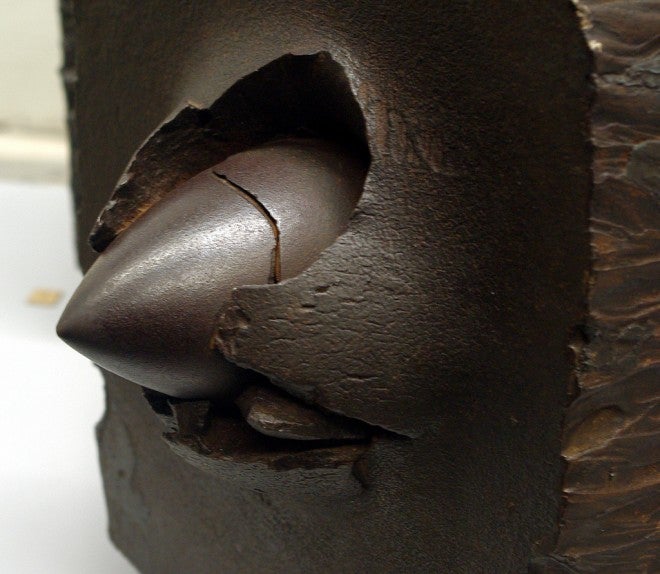The subject of armor penetration previously was largely confined to the realm of big bore rifles or cannons intended to tackle tanks and other kinds of armored vehicles, but as the popularity of steel and composite body armor increases, it has become more and more relevant to the subject of small arms. It may be tempting to pull contextless data from different sources, and present them as being comparable, but in most cases this is a mistake. Unfortunately, quoting armor penetration numbers from two different countries or organizations is not a good way to compare the capabilities of rounds against one another, as I will explain.
For this article, we’ll be using figures for the US .50 BMG M8 steel cored armor piercing incendiary round, and the Russian 14.5x114mm AT/HMG BS tungsten cored armor piercing incendiary round. These are two very dissimilar types of ammunition, and the figures used in this post are, as we’ll see, only examples and should not be used for reference.
There are several reasons why penetration data is best compared within a single source, or only between standardized sources (for example two separate tests conducted by the same organization). First and simplest, the armor quality used by different organizations and countries is not necessarily the same, even if the plates are each listed as “RHA” (rolled homogeneous armor, a rough testing standard). Second, the methodology used by the testers makes a huge difference. Let’s suppose that we have numbers found in a Soviet source for the 14.5mm BS round, and numbers found in an American source for the .50 caliber M8 API, and state them like so:
14.5mm BS penetrated 30mm at 100m distance, and 25mm at 500m.
.50 caliber M8 penetrated 25mm at 100m distance, and 18mm at 500m.
Note that in this example I used round numbers for the 14.5mm. Round numbers may be indicative of statements like “the round will penetrate these plates at this range”, versus a statement of “when shot at a very thick plate the round penetrated this deeply into it”, but unfortunately when stripped of necessary context, it’s impossible to tell for sure. These are very different statements made from different testing methods that will give you very different results even with the same round. Consider, for example, that testers could fire a 14.5mm round at a 1mm plate, and it would indeed penetrate it. If it was then stated as “14.5mm will penetrate 1mm of armor at X distance”, that’s technically true but that is clearly not the maximum thickness the round will penetrate. This is just one example of how testing methods may differ, there are many, many more, including the plates being set up at different angles to the shot, the plates being held or supported in different ways, etc.
Third, penetration and perforation may be an additional source of confusion; penetration is where the projectile breaks through the armor, while perforation is where the projectile passes completely through. To make matters worse, sometimes the word “penetration” is used to mean either penetration or perforation! Further, not all shots are the same, even in controlled conditions, and therefore many testing organizations have standards as to how often a shot must penetrate or perforate a plate. Suppose that 14.5mm perforates a 30mm plate 100% of the time at 100m, but .50 penetrates a 25mm plate 50% of the time at 100m. Just saying “14.5mm penetrates (general term) a 30mm plate at 100, and .50 penetrates a 25mm plate at 100m” makes them sound similar in capability, when in fact this is very much not the case; the 14.5mm in this example is much more powerful and capable.

A 17 pdr (76 mm, or 3″) projectile has penetrated, but not perforated, this section of 6″ test plate. Due to spalling of the metal, this would still likely have posed a great threat to the crew of a vehicle. Image source: reddit.com
Can we tell whether the comparison in the quote box above is a good or a poor one? Well, for a start, the 14.5mm BS round is clearly a much larger and more powerful cartridge than .50 BMG M8, with more sectional density and almost 400 ft/s more muzzle velocity, but that does not necessarily mean that it will have superior penetration characteristics. However, the former round uses a tungsten core, whereas the core for the .50 M8 API is steel. Tungsten is a much harder, denser material used in projectiles almost exclusively for its excellent armor penetration capabilities, far above that of steel penetrators. This plus the larger size and higher velocity of the 14.5mm BS strongly suggests it should have greatly superior armor penetration characteristics vs. the .50 M8. We can help verify that assumption with some historical context: During WWII, the similar but less capable tungsten-cored BS-41 API was still effective at about 100 meters against the vulnerable 40mm thick unsloped side hull armor of Panther tanks. This was in fact such a problem for the Germans that they introduced side skirts on their tanks to counter it!
The only way to truly tell how two rounds compare with one another for penetration is to do it the hard way, by testing them repeatedly against homologous sections of armor at different ranges. There are available some test results that give a good picture of how different historical cannons performed versus one another, but unfortunately the same kind of rigorous testing is not really available for small arms ammunition. As armor plates become cheaper and more available, however, this may well change.
Thanks to marathag for his contribution to this article.
 Your Privacy Choices
Your Privacy Choices
